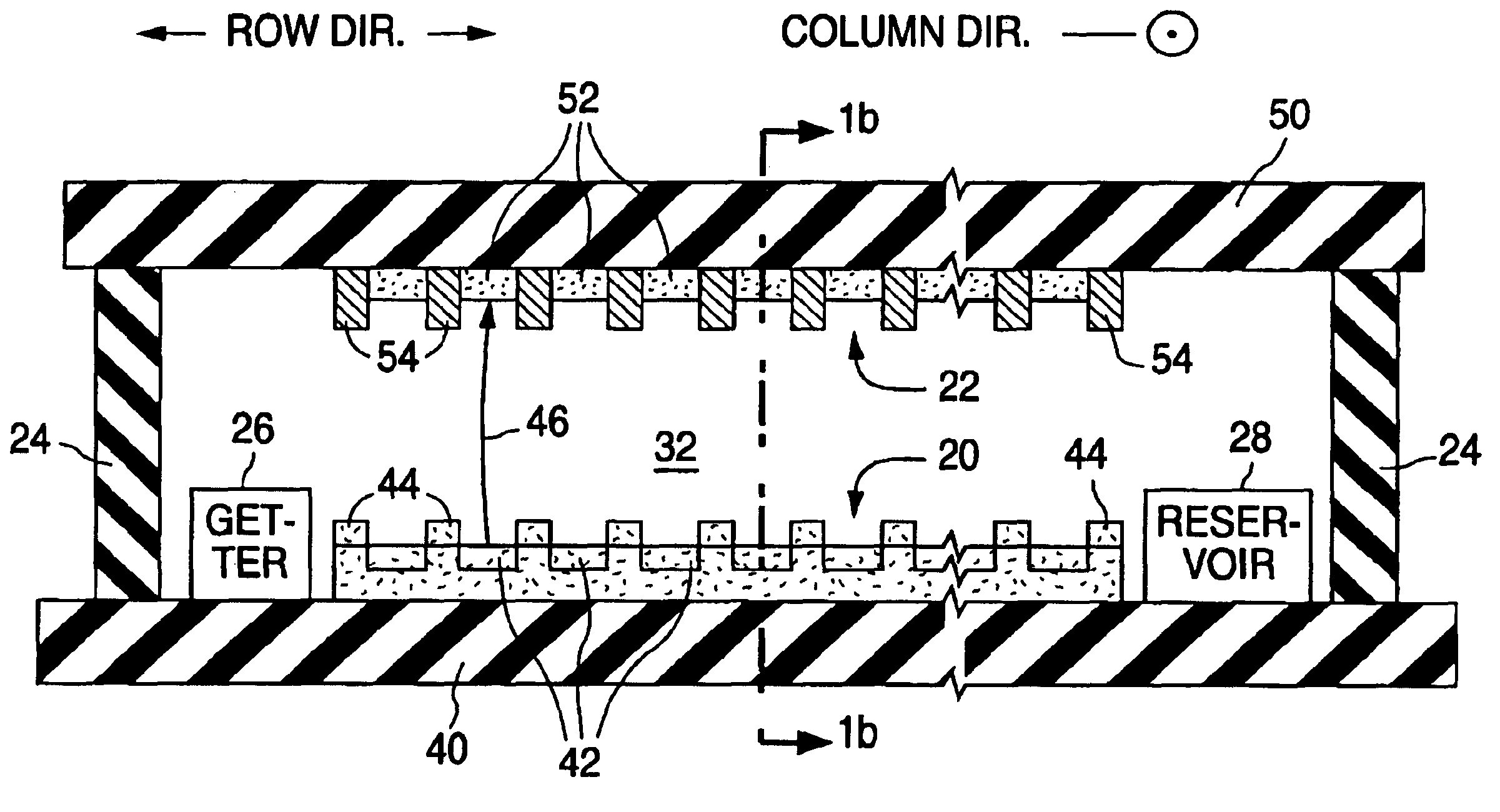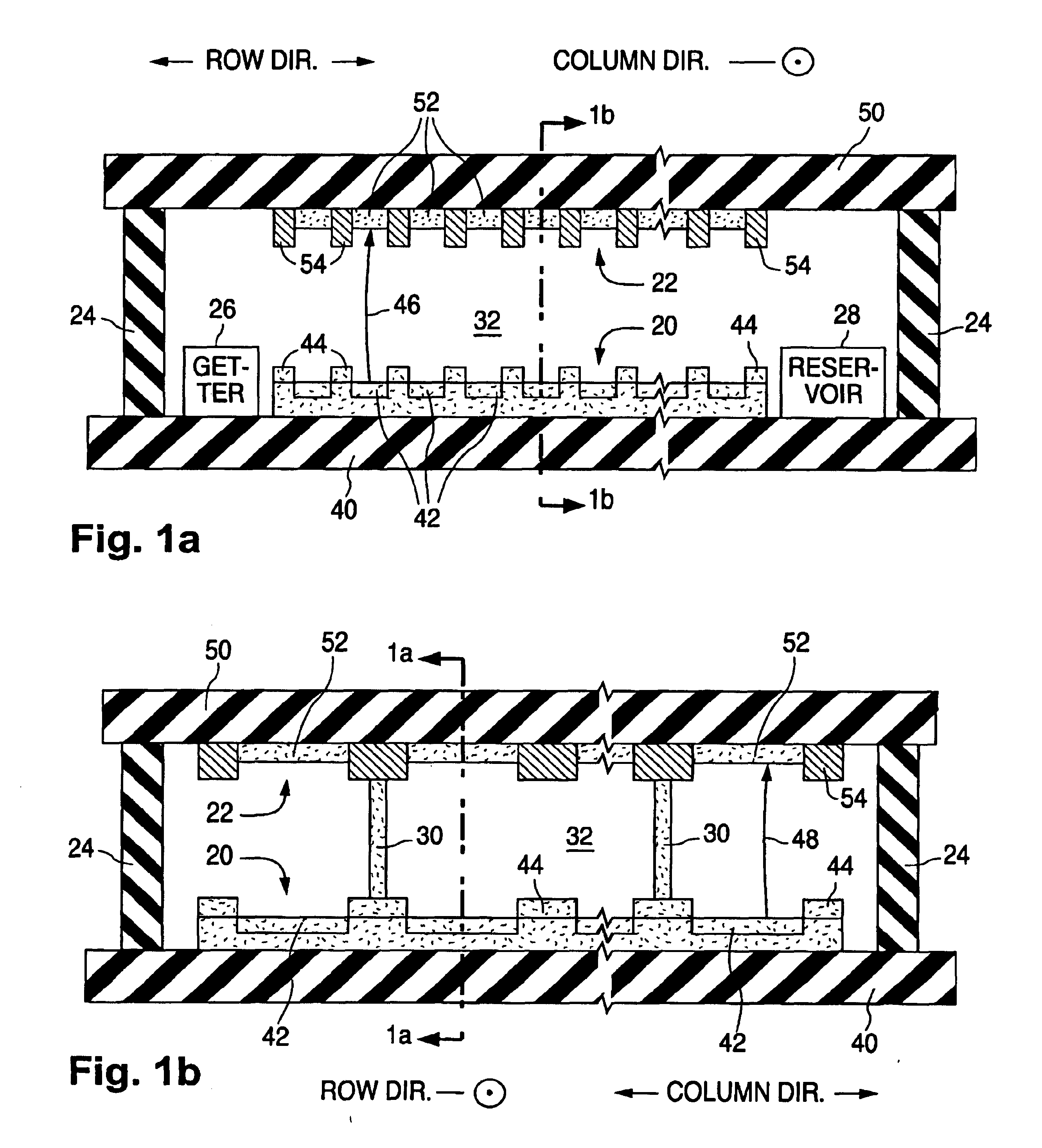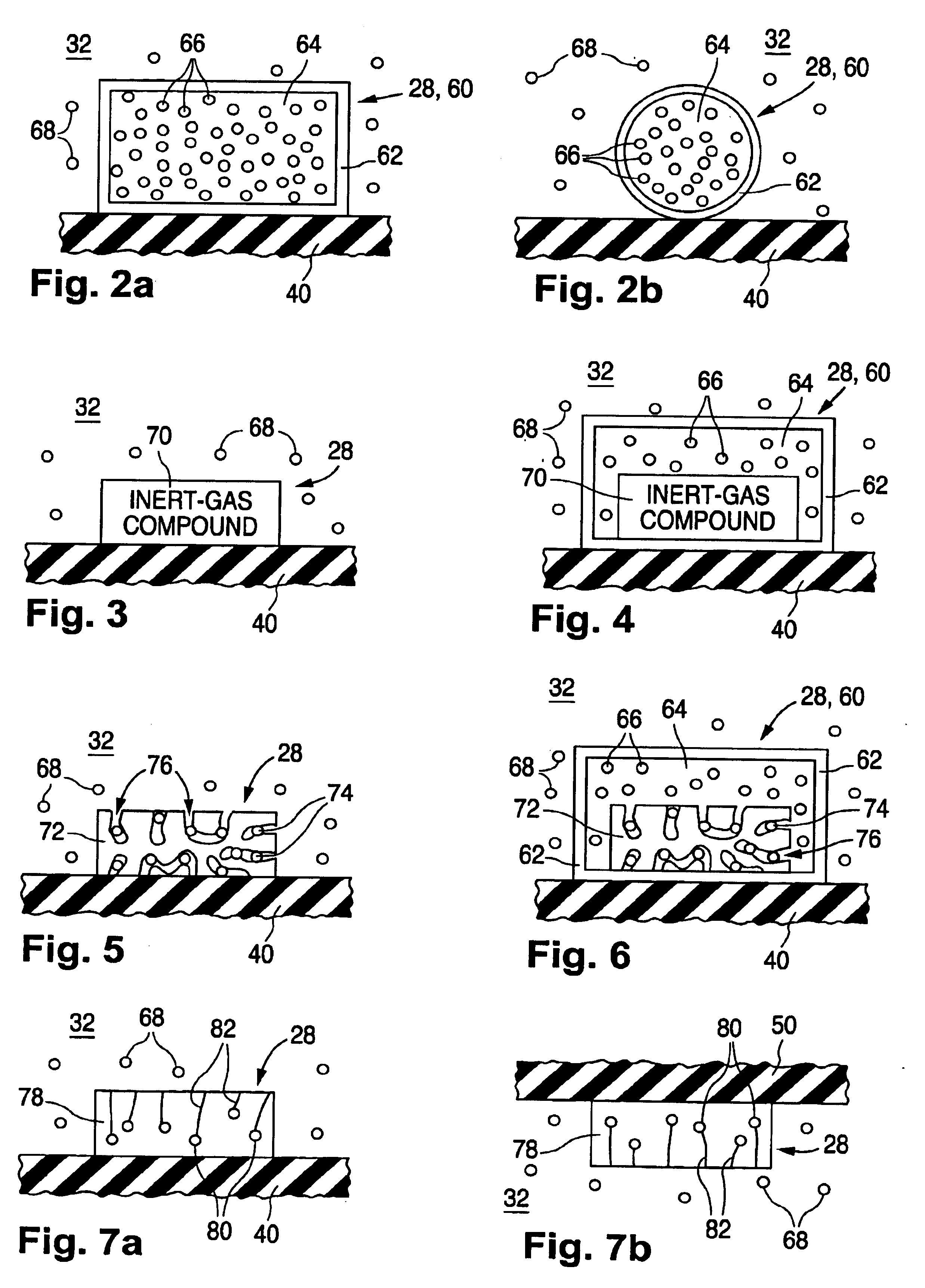Cleaning of cathode-ray tube display
a cathode-ray tube and display technology, applied in the field of cathode-ray tube cleaning, can solve the problem that the inherent capability of the display to remove contaminant material from the electron-emitting device is quite low, and achieve the effect of reducing the likelihood of dislodged contaminant material returning
- Summary
- Abstract
- Description
- Claims
- Application Information
AI Technical Summary
Benefits of technology
Problems solved by technology
Method used
Image
Examples
Embodiment Construction
A flat-panel CRT display having a built-in capability, in accordance with the invention, for automatically cleaning the display's electron-emitting device during normal display operation is described below. The present flat-panel CRT display is typically suitable for a flat-panel television or a flat-panel video monitor for a personal computer, a laptop computer, a workstation, or a hand-held device such as a personal digital assistant.
A flat-panel CRT display whose electron-emitting device is cleaned according to the invention is typically a color display but can be a monochrome, e.g., black-and-white or black-and-green, display. Each electron-emissive region and the corresponding oppositely positioned light-emissive region form a pixel in a monochrome display, and a sub-pixel in a color display. A color pixel typically consists of three sub-pixels, one for red, another for blue, and the third for green.
In the following description, the term “electrically insulating” or “dielectric...
PUM
 Login to View More
Login to View More Abstract
Description
Claims
Application Information
 Login to View More
Login to View More - R&D
- Intellectual Property
- Life Sciences
- Materials
- Tech Scout
- Unparalleled Data Quality
- Higher Quality Content
- 60% Fewer Hallucinations
Browse by: Latest US Patents, China's latest patents, Technical Efficacy Thesaurus, Application Domain, Technology Topic, Popular Technical Reports.
© 2025 PatSnap. All rights reserved.Legal|Privacy policy|Modern Slavery Act Transparency Statement|Sitemap|About US| Contact US: help@patsnap.com



